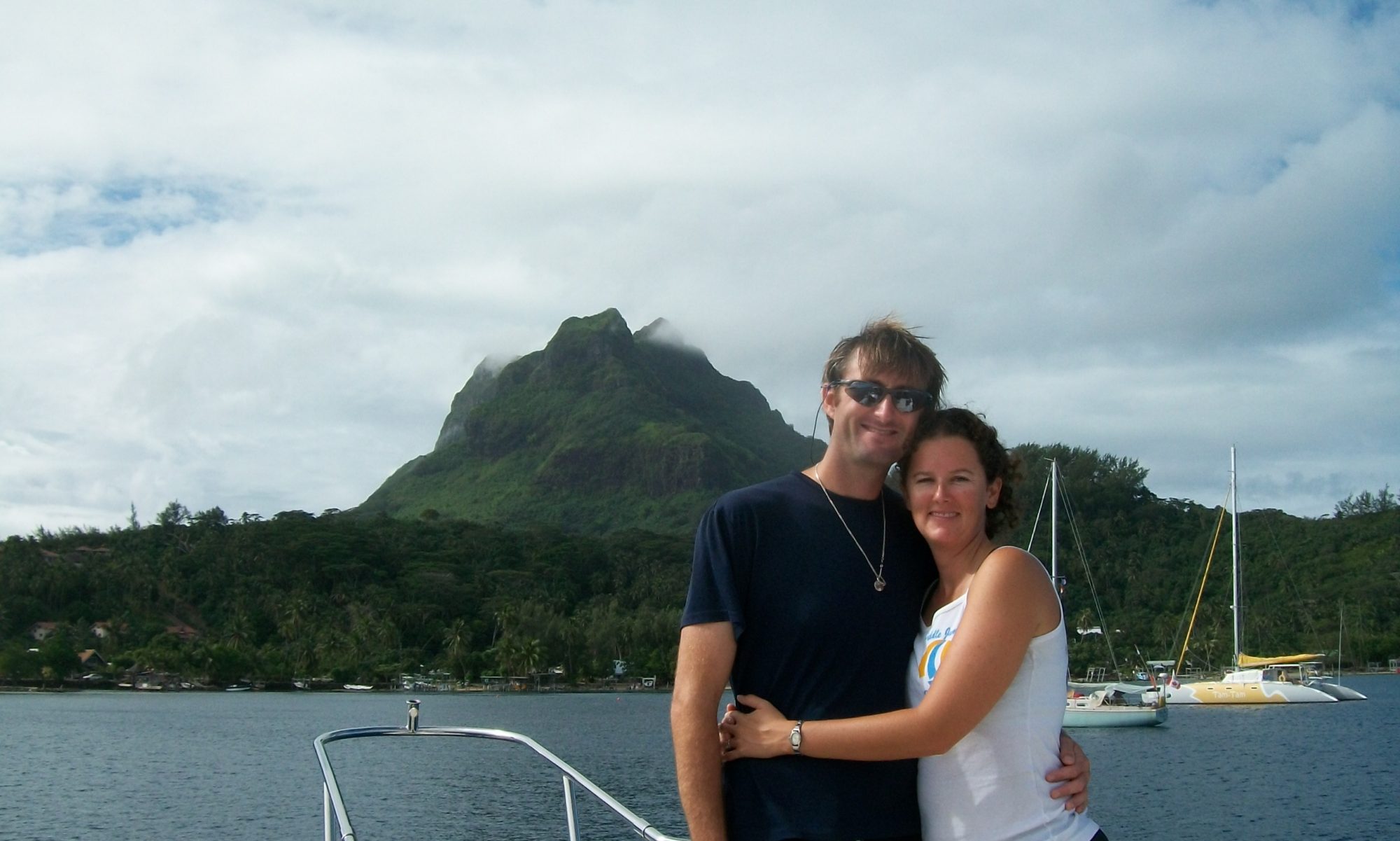South Pass of Fakarava, Tuamotu, French Polynesia
I don’t feel like I am giving a fair scope for the distance between these islands. I could tell you about each voyage of about 100 miles from remote isolated desert island to remote even more desolate island but really, that would get boring. If you want to know what it’s like sailing the high seas, look at the blog entries about us crossing the Pacific Ocean to the Marquesas. It’s like that. FYI, my ukulele and French continue to improve and I’m learning stuff about Solomon I never knew before.
I do not wish to bore you with the details while I also do not want to deceive you that these transits are just afternoon “hops” from one island to the next. Typically, a trip between islands typically takes a day and can take as many as 5.
The trip to Fakarava took 1 day but during that day we broke into another can of butter.
You see, Polynesians and cruisers have a similar problem: we both don’t have a ton of refrigerator space so we both minimize what needs to be put in there as much as possible. Did you know that as long as you never refrigerate your eggs in the first place that they actually don’t require refrigeration? Neither did I. How about butter can be preserved for long periods of time in a can? And that certain kinds of milk don’t need to be refrigerated until the carton is opened? I have learned on this trip that Americans refrigerate way too much stuff.
The coral reef of Fakarava was very exciting for all of us because it the only Tuamotu to be designated a UNESCO world heritage site. Tiffany knows more about this than me but the short of it is that the UN thinks that this place is awesome and should be preserved for it’s natural significance. Translation: Awesome stuff here, come check it out without destroying it.
(Again, I got this off a picture of the visitor center’s map. Don’t use this to navigate. Buy a chart.)
The voyage in was another hair raising experience where we were stationed on the bow watching for coral heads in the perfect crystal clear blue water. Just to add a little spice to the mix, we had currents flowing around the pass to make our lives extra interesting. Now maybe you think after our Kauehi adventure we had relaxed about the whole sailing over a coral reef thing. Let me point something out to you:
Narrow channel + Sharp coral reefs on both sides + lateral currents going every direction = nervous crew.
Upon completing our transit of the channel we discovered the “south pass village” that would be our home for the next few days as we indulged ourselves in figuring out just exactly what the UN thought rated this place international recognition and protection.
Also, we got invited over by one of our fellow cruising boats to experience one final taste of the Marquesas: a goat dinner.
The Marquesians raise goats to eat and they are very good at this particular skill. A fact I learned regrettably after I had left the Marquesas…
– Greg


































